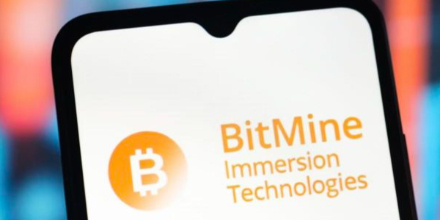Bitwise CIO Analysis: The Scale Effect Behind DAT Valuation Discrepancies
Author: Matt Hougan
Translation: TechFlow
Original Title: Bitwise CIO: My Views on the Current State of DAT Companies
I have seen many problematic analyses regarding DATs (Digital Asset Treasury companies). In particular, I have seen many misconceptions about whether their trading price should be equal to, above, or below the value of their held assets (the so-called “mNAV”).
Here are my thoughts on this issue.
When evaluating a DAT, the first question you should ask yourself is: If this company had a fixed lifespan, what would its value be?
This approach is especially valuable in a short-term framework. For example: Suppose you have a bitcoin DAT that announces it will close this afternoon and distribute its held bitcoin to investors. Then its trading price would be exactly equal to the value of its held bitcoin (i.e., mNAV of 1.0).
Now extend the timeframe. What if it announces it will close in a year? At this point, you need to consider all the possible reasons why this DAT’s trading price might be above or below its bitcoin value. Let’s analyze them one by one.
There are three main reasons why a DAT’s trading price might be at a discount: lack of liquidity, expenses, and risk.
Lack of liquidity: You wouldn’t want to pay today’s full price for bitcoin you’ll only receive a year from now. But you’d be willing to pay a certain price. So, would you require a 5% discount? Or a 10% discount? If it’s 10%, I’d definitely take it. This liquidity discount reduces the value of the DAT.
Expenses: Every dollar spent on operating costs or executive compensation ultimately comes out of your pocket. Suppose our 12-month DAT holds bitcoin worth $100 per share, but pays executive compensation equivalent to $10 per share annually. You’d definitely require at least a 10% discount relative to NAV (Net Asset Value).
Risk: There’s always a chance the company could make mistakes in some way, which is a risk that cannot be ignored. You also need to factor this risk into the price.
Now let’s look at why a DAT might trade at a premium. In the US, there’s only one reason: if it can increase the amount of cryptocurrency held per share.
Here are the four main ways I’ve seen DATs attempt to achieve this goal.
Issuing debt: If you issue debt in USD and buy cryptocurrency, and the cryptocurrency appreciates against the dollar, you can repay the debt and increase the amount of cryptocurrency held per share. This is usually how some strategies increase their bitcoin holdings per share. (Of course, if the price of bitcoin falls, the opposite could happen.)
Cryptocurrency lending: If you lend out cryptocurrency and earn interest income, you can increase the amount of cryptocurrency held per share.
Using derivatives: If you hold cryptocurrency and operate by, for example, writing calls, you can generate income and acquire more assets. Of course, this also means you might forgo potential gains from price appreciation.
Acquiring cryptocurrency at a discount: DATs can acquire cryptocurrency at a discount in various ways, such as:
-
Purchasing locked assets from foundations that wish to sell a certain asset but do not want to disrupt the market;
-
Acquiring other DATs trading at a discount;
-
Repurchasing their own shares (if their shares are trading at a discount);
-
Acquiring businesses that generate cash flow and using that cash flow to purchase cryptocurrency.
For DATs, one challenge is that most reasons for trading at a discount are certain, while most reasons for trading at a premium are uncertain.
Therefore, DATs face a high bar: most DATs will trade at a discount, and only a few outstanding companies will trade at a premium.
Returning to our example: If you have a bitcoin DAT that will liquidate in 12 months, you can: 1) calculate its expenses; 2) add a risk discount; 3) offset these discounts with your expectations of its ability to increase bitcoin holdings per share. That’s its fair value!
You might think: Okay, Matt, but DATs don’t have a fixed lifespan. They exist indefinitely!
This does make the issue more complex. But in reality, it means everything gets amplified. Expenses and risks compound over time, so you need to pay close attention to these factors. Likewise, DATs that can steadily increase cryptocurrency holdings per share may become extremely valuable.
When I closely examine the ways DATs increase cryptocurrency holdings per share, I notice a significant feature: every method benefits from economies of scale.
Larger DATs find it easier to issue debt than smaller ones; they have more cryptocurrency available for lending; they can access more liquid options markets; and they have better opportunities in M&A and other discount transactions.
In the past six months, DATs have generally moved in sync. But looking ahead, I think we’ll see more differentiation. Some DATs will execute well and trade at a premium, while more DATs will underperform and trade at a discount. This model can help us think about which DATs belong to the former group and which to the latter.
Disclaimer: The content of this article solely reflects the author's opinion and does not represent the platform in any capacity. This article is not intended to serve as a reference for making investment decisions.
You may also like
Bitcoin Holds the $84,000 Support Like a Champion: Oversold Rebound Targets $94,000 This Week
Bitcoin has successfully held the $84,000 support level and may rebound to $94,000 this week. If it falls below $80,000, it could further drop to $75,000. Although market sentiment is extremely bearish, a short-term oversold condition may trigger a rebound. Summary generated by Mars AI This summary was generated by the Mars AI model, and its accuracy and completeness are still being updated iteratively.

What will happen to the price of DOGE after the listing of Grayscale's GDOG ETF?
Dogecoin's price is being suppressed by resistance at $0.1495, with short-term support at $0.144. Grayscale's DOGE ETF debut failed to boost the price, and continued whale sell-offs are exerting further pressure. Technical analysis indicates a neutral-to-bearish trend, lacking clear reversal signals. Summary generated by Mars AI. This summary was generated by the Mars AI model, and the accuracy and completeness of its content are still undergoing iterative updates.

BitMine spends heavily again to buy 70,000 ETH! Holdings surpass 3% of total circulating supply; Tom Lee: Ethereum's worst-case scenario is a drop to $2,500
BitMine Immersion Technologies increased its holdings by 69,822 ETH, bringing its total holdings to 3.62 million ETH, which accounts for 3% of the circulating supply, with total assets of $11.2 billions. Tom Lee believes that ETH's risk/reward is asymmetric, with limited downside potential. Summary generated by Mars AI. The accuracy and completeness of this summary are still being iteratively improved by the Mars AI model.

Trending news
MoreBitget Daily Digest (Nov 25) | Grayscale XRP ETF and Franklin XRP ETF go live; Public companies bought a net $13.4M BTC last week; U.S. September PCE rescheduled to December 5, and Q3 GDP advance report canceled
Bitcoin Holds the $84,000 Support Like a Champion: Oversold Rebound Targets $94,000 This Week
